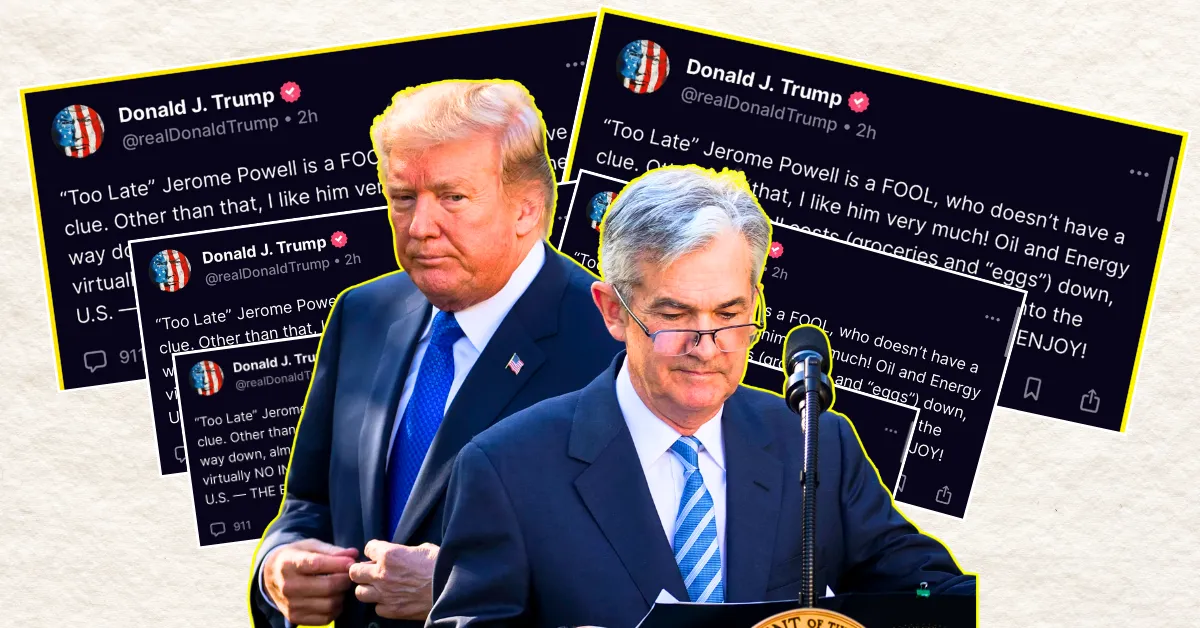The escalating tension between President Donald Trump and Federal Reserve Chair Jerome Powell has become a focal point in the intersection of politics and economics, raising critical questions about the independence of the U.S. central bank and the implications of political interference in monetary policy. Trump’s repeated calls for Powell’s resignation, coupled with threats of replacement, reflect deeper disagreements over economic strategy in an environment where inflation and employment data remain volatile. This conflict is not merely a political spectacle but a substantive debate over the future of U.S. economic governance.
The Role of the Federal Reserve and Jerome Powell’s Leadership
The Federal Reserve (Fed) is a cornerstone of the U.S. economy, tasked with regulating monetary policy to balance inflation and employment. Jerome Powell, appointed as Fed Chair by Trump in 2018, has navigated a complex economic landscape marked by fluctuating inflation and growth signals. His tenure has been characterized by cautious rate adjustments, reflecting the Fed’s dual mandate of maintaining price stability and fostering sustainable economic growth. Powell’s decisions, such as holding interest rates steady despite pressure to cut them, underscore the Fed’s commitment to avoiding political influence in monetary policy.
Powell’s leadership has been tested by external pressures, including Trump’s vocal criticism of the Fed’s rate policies. The President has argued that higher interest rates could stifle economic growth and job creation, while Powell has maintained a measured approach to avoid premature policy shifts. This tension highlights the delicate balance between political expectations and the Fed’s institutional independence. The Fed’s recent restraint, despite strong job data and inflation that briefly exceeded targets, demonstrates the complexity of current economic conditions and the need for policy decisions to be insulated from short-term political considerations.
Trump’s Discontent and the Push for Leadership Change
President Trump has been vocal about his dissatisfaction with Powell’s policies, particularly the pace and timing of interest rate cuts. His administration has suggested that higher interest rates could undermine economic growth and job creation, prompting calls for a more accommodative monetary policy. Reports indicate that Trump has identified potential replacements for Powell, signaling his readiness to push for a leadership change if necessary. This move would mark an unprecedented challenge to the Fed’s independence and could have far-reaching implications for market confidence and economic stability.
The legal and institutional constraints on removing a Fed Chair, however, are significant. The Fed Chair serves a four-year term and can only be removed “for cause,” typically interpreted as malfeasance or incapacity rather than policy disagreements. Powell has reportedly expressed his willingness to resist any forced removal, emphasizing the importance of maintaining the Fed’s independence. Attempts to dismiss a sitting Chair without conventional cause would not only face legal challenges but could provoke a constitutional crisis regarding the separation of powers and the independent function of critical institutions.
Market and Economic Implications of the Trump-Powell Conflict
The ongoing clash between Trump and Powell has introduced volatility into financial markets, with investors reacting to the uncertainty surrounding Fed leadership and monetary policy. The U.S. dollar has experienced fluctuations, and Treasury yields have declined amid speculation of an earlier-than-expected rate cut. Equity markets have also been reactive, responding to policy signals and political rhetoric. The critical risk lies in the potential erosion of the Fed’s independence, which could undermine long-term confidence in U.S. economic management and destabilize inflation expectations and investment climates.
For investors and the broader economy, the stability of the Fed’s leadership is paramount. The Fed’s ability to make decisions based on economic data rather than political pressure is essential for maintaining market confidence and ensuring sustainable growth. If the Fed were to yield to political influence, it could lead to premature policy shifts that risk reigniting inflation or slowing economic growth. The current environment underscores the importance of preserving the Fed’s independence as a safeguard against political interference in monetary policy.
Legal and Institutional Protections for Fed Independence
The legal framework surrounding the Fed’s independence provides significant protections against political interference. The Fed Chair serves a fixed term, and removal is only permissible for cause, ensuring that monetary policy decisions are insulated from short-term political pressures. Powell’s reported willingness to resist any forced removal highlights the institutional resilience of the Fed and the importance of maintaining its independence.
The potential consequences of attempting to remove a Fed Chair without just cause are severe. Such a move could provoke a constitutional crisis, challenging the separation of powers and the independent function of critical institutions. The Fed’s independence is a cornerstone of U.S. economic governance, and any attempt to undermine it could have lasting repercussions for market confidence and economic stability. The current debate over Powell’s leadership serves as a reminder of the importance of preserving the Fed’s autonomy in the face of political pressures.
Toward a Resolution: The Path Forward
As the conflict between Trump and Powell continues, the focus will likely shift to whether the President will intensify efforts to replace Powell or wait for a natural transition at the end of Powell’s term in early 2026. The broader economic context remains uncertain, with inflation overshooting targets and mixed signals in employment data. The Fed is navigating a delicate balance, where premature rate cuts could risk reigniting inflation, while a delay may slow economic growth. Against this backdrop, the stability of Fed leadership is more than symbolic; it is vital to effective economic stewardship.
The coming months will be critical for U.S. monetary policy, as markets and policymakers assess evolving inflation and employment data. Whether Powell remains at the helm or is replaced, the central challenge will be maintaining credibility and stability in an increasingly turbulent economic and political environment. This episode serves as a vivid reminder that monetary leadership is not only about managing numbers but also about weathering political storms without losing sight of long-term economic health. The preservation of the Fed’s independence remains essential for ensuring the stability and prosperity of the U.S. economy.

